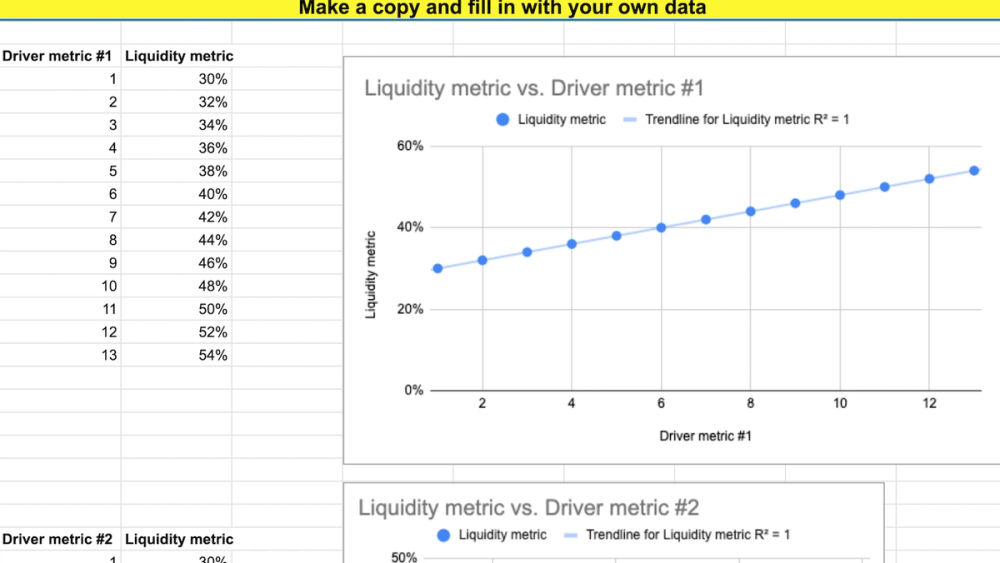The Hookup Doctor's Guide
Navigating the world of modern dating and relationships.
Marketplace Liquidity Models: Navigating the Currents of Commerce
Dive into the world of marketplace liquidity models and unlock secrets to thriving in today's dynamic commerce landscape!
Understanding Marketplace Liquidity: Key Concepts and Definitions
Marketplace liquidity refers to the ease with which assets can be bought or sold in a market without causing a significant impact on their prices. Understanding liquidity is essential for both buyers and sellers as it indicates the market's efficiency in facilitating transactions. A highly liquid market enables participants to enter and exit positions quickly, while a market with low liquidity can lead to wider spreads and increased volatility. The following key concepts are integral to grasping marketplace liquidity:
- Bid-Ask Spread: This is the difference between the highest price a buyer is willing to pay (bid) and the lowest price a seller is willing to accept (ask). A narrower spread often indicates higher liquidity.
- Market Depth: This refers to the market's ability to sustain relatively large market orders without impacting the price of the asset significantly. A deep market can absorb larger trades more efficiently.
Another crucial aspect of understanding marketplace liquidity is distinguishing between liquid and illiquid markets. Liquid markets typically feature a high volume of transactions and a large number of participants, making it easier for assets to be transferred swiftly and at stable prices. Conversely, illiquid markets can lead to price discrepancies and difficulty in executing trades. Investors should be aware of their trading environment and consider the following factors when evaluating liquidity:
Transaction Costs: In illiquid markets, transaction costs can be significantly higher due to wider spreads.
Market Sentiment: Emotional trading and speculative behavior can exacerbate liquidity issues, leading to sudden changes in market conditions.

Counter-Strike is a popular series of first-person shooter games that focuses on team-based gameplay. Players assume the roles of either terrorists or counter-terrorists and engage in various objective-based scenarios. For those looking to enhance their gaming experience, using a daddyskins promo code can provide access to exclusive in-game items and skins.
Optimizing Your Marketplace: Strategies for Enhancing Liquidity
To optimize your marketplace for better liquidity, it is essential to implement strategies that facilitate smooth transactions and foster user engagement. One effective approach is to streamline the listing process, allowing sellers to quickly and easily add their products. Implementing filters and search functionalities can also help buyers find what they need without hassle. Additionally, providing real-time data on market trends can empower users to make informed decisions, thereby increasing confidence in their transactions. Enhancing the user experience by ensuring a mobile-friendly design and intuitive navigation can significantly boost participation levels.
Another crucial strategy for enhancing liquidity is to build a sense of community within your marketplace. Encourage interaction between buyers and sellers through reviews and ratings, which can promote trust and encourage repeat transactions. Consider hosting promotional events or discounts to stimulate activity and attract new users. Including educational resources, such as blogs or webinars about market trends and best practices, can also empower users and enhance their understanding of the marketplace dynamics. Implementing these strategies collectively contributes to a more vibrant ecosystem, driving liquidity and making your marketplace a preferred choice for users.
What Factors Impact Liquidity in Online Marketplaces?
Liquidity in online marketplaces is influenced by a variety of factors that can either facilitate or hinder the buying and selling process. One of the primary factors is market demand; higher demand for products typically leads to increased liquidity, as buyers are more willing to purchase goods quickly. Conversely, if there’s low demand, sellers may find it difficult to liquidate their assets, resulting in lower liquidity. Additionally, the number of active users on a platform can significantly impact liquidity; marketplaces with a larger user base often experience faster transactions due to a higher likelihood of matching buyers and sellers.
Another critical element affecting liquidity is transaction fees associated with buying and selling items. High fees can discourage users from participating in the market, thereby decreasing the overall liquidity. Furthermore, the quality of listings plays a significant role; well-described, accurately priced, and high-quality listings tend to attract more buyers, contributing to greater liquidity. Lastly, factors such as payment methods and shipping options also influence liquidity, as convenient and varied options improve the overall purchasing experience, making it easier for transactions to occur.